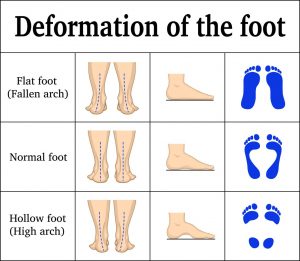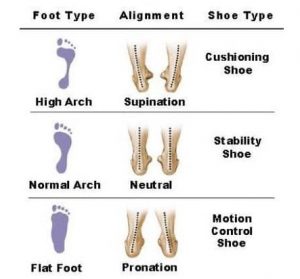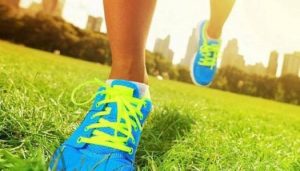Custom Insoles
Anyone who has recently bought a new pair of running trainers may well have found themselves being recommended some ‘superior’ or customized insoles to replace those that come with the trainers.
In one major running store chain, the footwear recommendation service includes not only a gait analysis but also the creation of customized insoles to enhance the fit and comfort of your shoe by heating an ‘off the shelf’ insole and molding it to the shape of your foot.
Though some have accused this as being nothing more than a clever upsell, many runners do report that upgraded or customized insoles have brought them a solution to running pain and even performance improvements. This has not been the case for everybody of course – some runners experience no change at all, and others find themselves in even more pain.
So what’s it all about? Why the inconsistency? Do insoles work?
Insoles Vs. Customized insoles
Before we start, it may be useful to differentiate between insoles and orthoses.
The distinction is sometimes tricky, but generally a foot orthosis (plural orthoses) is made specifically for your needs by a trained specialist (Podiatrist, Orthotist, Pedorthist).
Customized insoles can be divided into two categories: functional and accommodative. Functional orthoses are engineered with the aim of modifying the structural and functional characteristics of your skeletal system in an attempt to reduce specific pain. Accommodative orthoses are made to provide a cushion or comfortable support underneath your foot but are not meant to correct any dysfunction.
Insoles are not designed with just one foot in mind. They are prefabricated and mass-produced. Though once upon a time they existed to simply enhance comfort, expansion of the industry has meant that today a huge variety of off-the-shelf insoles are now available offering different forms of support and cushioning to meet the needs of different types of runner.
The Foot Type Model
In an attempt to best serve a runner’s specific needs, most brands of insoles offer three distinct types: High Arch, Neutral Arch, Low Arch.
Their sale typically involves an assessment in which you stand on some form of pressure plate from which an imprint of your feet shows whether you have low, neutral, or high arches. The “Wet Foot Test” is also commonly practiced.
This method of categorization is based on the Foot Type model (see diagram below) and has been used by the running shoe industry since the 1980s, theorizing that an efficient, healthy, injury-free running gait depends on achieving a “neutral” arch height at midstance (when the weight of the body passes over the weight-bearing ankle).

Running Injuries and Pronation
If runners are seen to display a drop of the medial arch that exceeds this neutral position (collapsing), the ankle (subtalar joint) is said to be “overpronating” in which case some form of motion control shoe is advised, with built-up support under the arch; for runners whose arches do not drop “enough”, the ankle is said to be an “underpronator” or “supinator” and a flexible, cushioned shoe is advised to absorb some of the shocks that “under pronating” is said to cause. For those whose ankles appear in “neutral” alignment, a “stability” or “neutral” shoe is advised.

Lack Of Scientific Data
Though the Foot Type model provides a very tidy way of organizing trainers and insoles to meet the needs of runners, it is unfortunately not backed by any scientific evidence.
“But it worked for me!” I hear someone shout.
Well yes, there are doubtlessly some runners who after being labeled overpronators, low arched, flat-footed, etc. purchased recommended motion control shoes and saw their pains go, but the problem is an equal amount of runners have not, and some have even seen pain increase. It’s that old “correlation does not imply causation” thing; just because it starts to rain when you dance does not mean your dance caused the rain to start.
The relationship between running injuries and running biomechanics is extremely complicated, multi-factorial and not yet sufficiently understood to be able to produce a working model on which to base running shoe or insole recommendation. Studies repeatedly illustrate subject specificity, i.e. what works for one runner does not necessarily work for another.
The closest current research has brought us with regards to the influence of footwear on injuries & performance is “choose a trainer that is comfortable for you.”
Kinematics Vs. Kinetics
Research into the use of customized insoles may cast light onto why insoles seem to help some runners some of the time.
In simple terms, assessment of the effect and suitability of customized insoles involves two branches of mechanics: Kinematics looks at the motion of bodies, i.e. angular changes and alignment, traditionally where the role of customized insoles has been thought to play a role. But kinematics does not consider what causes the motion; this is where Kinetics steps in, looking at the relationship between the motion of bodies and its causes, in other words, forces (and torques).
Studies have shown that although customized insoles bring about kinematic effects in some subjects, they do not in others. It is all very subject-specific. However, studies looking at the kinetic effects have had different results.
Customized insoles always result in a change in forces. This is highly relative because one hypothesis as to the cause of many running injuries is that of forces leading to certain tissues being overloaded beyond their permitted range. If an orthosis manages to succeed in altering kinetics such that the degree of loading of the tissue/s in question is brought to an acceptable level, this may pave the way for successful treatment of the injury. It is important to note that the level of change in loading will vary depending on the health of the tissue in question, so the type or style of orthosis may well need to change during rehabilitation.
So, it seems that change in the forces within injured tissues is more closely linked to symptom reduction than visible angular changes. Moreover, studies show that orthoses do not need to significantly alter joint alignment (kinematics) to reduce forces (kinetics). This lends a possible explanation as to how the introduction of orthoses may not cause any visual changes in alignment but still have an effect, be it desirable or otherwise. It may also explain how the introduction of any form of orthosis regardless of its type or style may cause initial success as a result of the change in load.
How Does This Relate To Insoles?
With regards to changing loading of forces at foot level, it is safe to say that anything inserted into a shoe will affect, even an odor eater as esteemed podiatrist Ian Griffiths pointed out to me recently on Twitter. Readers looking for greater insight into the way orthoses work should have a look at Griffiths’ excellent article The Myths Of Foot Orthoses (link at the end of this piece).
Though an insole may not serve its advertised function of modifying angles or alignment, it will result in initial force modification that has the potential to result in the user experiencing changes, whether they be positive or negative. The question is providing the right runner with the right insole at the right time.
To maximize the chances of an insole helping you, you will need to consult the services of a specialist. Their level of understanding will enable a decision to be made as to what type of customized insoles or insole will best suit you, especially with research suggesting that correct prescription may lie in something we can’t even see or easily measure (force changes). Selection will need to take into account the desired surface geometry (shape/contour), load-deformation characteristics (stiffness), and any necessary frictional characteristics (top cover selection) specific for that runner’s needs at that stage in their rehabilitation. Basing a decision on solely arch height is a stab in the dark.
That said, as long as you are prepared to listen to your body and not be conditioned by the promises made by the salesperson or the blurb on the packet, experimenting with insoles to see if they result in a reduction of symptoms or improve performance is not madness, just the same as experimenting with shoes is recommended as a way to find what works for you.
If the insoles happen to provide the correct shape, stiffness, and frictional characteristics, they may well work just as well as a custom device, for a while anyway.
That said, the majority of running injuries are caused by overtraining, a too sudden increase in frequency, intensity, or duration. Relying solely on a change in footwear or customized insole to deal with a running injury rarely brings success; it is simply one of many tools to consider.
And as always, in the case of severe pain or pain that persists for more than a few days, it is always advisable to seek the advice of a professional.
Happy Running!

